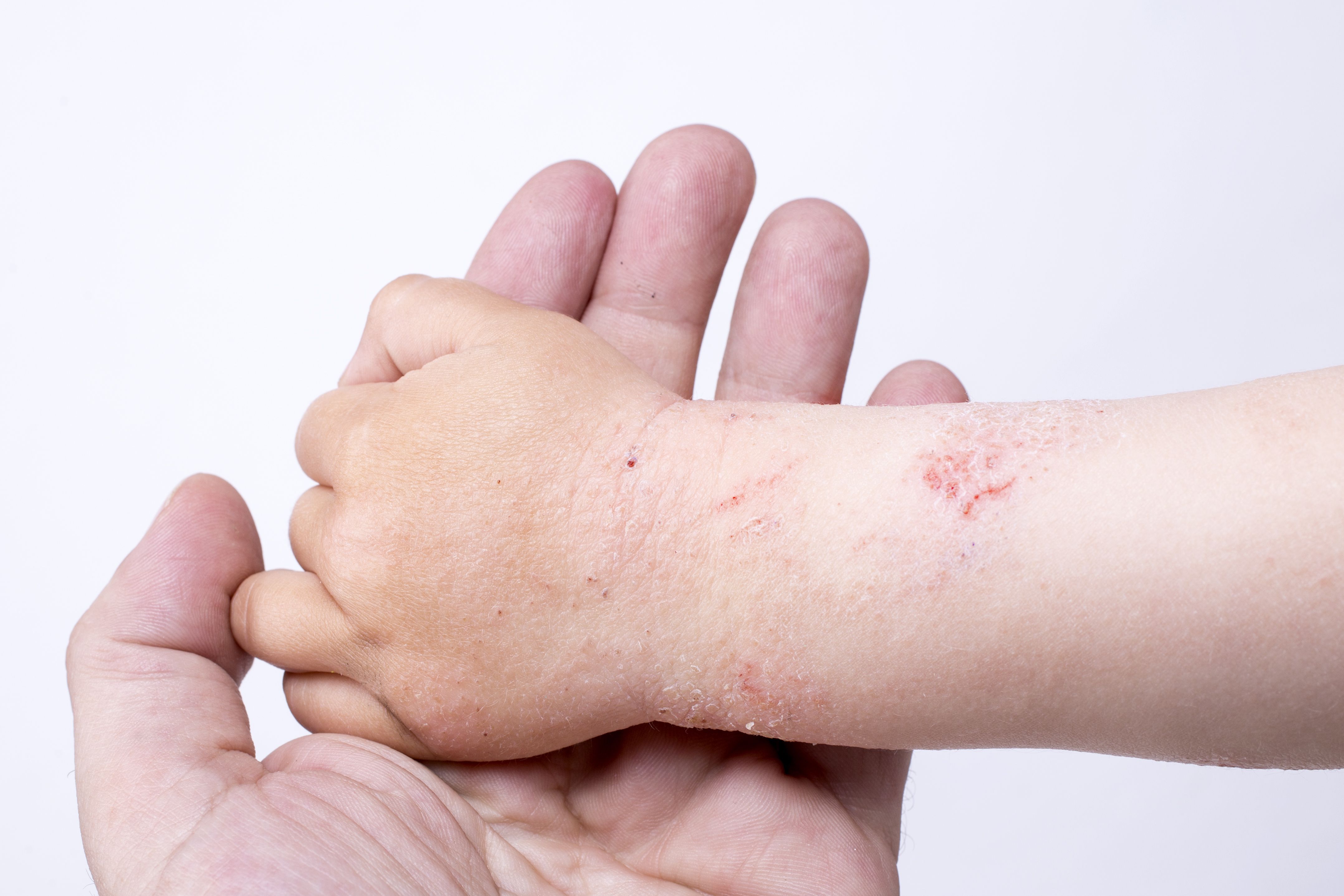- Acne
- Actinic Keratosis
- Aesthetics
- Alopecia
- Atopic Dermatitis
- Buy-and-Bill
- COVID-19
- Case-Based Roundtable
- Chronic Hand Eczema
- Chronic Spontaneous Urticaria
- Drug Watch
- Eczema
- General Dermatology
- Hidradenitis Suppurativa
- Melasma
- NP and PA
- Pediatric Dermatology
- Pigmentary Disorders
- Practice Management
- Precision Medicine and Biologics
- Prurigo Nodularis
- Psoriasis
- Psoriatic Arthritis
- Rare Disease
- Rosacea
- Skin Cancer
- Vitiligo
- Wound Care
Article
Gaps in pediatric atopic dermatitis treatment
Author(s):
Physicians spell out knowns and unknowns associated with treating pediatric atopic dermatitis.
Physicians spell out knowns and unknowns associated with treating pediatric atopic dermatitis. (©Taborsky/Shutterstock.com).jpg

Treating children with severe atopic dermatitis remains a challenge because there are so few effective and approved therapies. But there is hope that pipeline therapies, including Janus kinas (JAK) inhibitors and a monoclonal antibody against IL-31 receptor for treatment of itch may address some needs among severely impacted children, researchers write in the online May issue of Current Allergy and Asthma Reports.
The researchers reviewed what is known about severe atopic dermatitis in children and identified gaps in treatment and knowledge. They report:
The estimated $364 million annual cost to care for atopic dermatitis in children in the U.S. doesn’t take into account consequences of especially severe disease, such as pain, suffering, poor sleep, low self esteem and poor performance at school. Moderate-to-severe atopic dermatitis patients are also at higher risk than children without the disease for skin infections with S. aureus, potentially leading to invasive infections, form bacteremia to osteomyelitis, as well as serious complications, including meningitis.
Atopic dermatitis has been associated with filaggrin null mutations, and interleukin (IL)-31 has been shown to be an important cytokine in the pathogenesis of atopic dermatitis-related itch.
There are important gaps in aspects of the diagnosis, treatment and management of atopic dermatitis. For example, while atopic dermatitis remains largely a clinical diagnosis, clinicians lack a biomarker they can routinely use outside the research setting to diagnose atopic dermatitis severity.
Treatments beyond first line anti-inflammatory topical corticosteroids and second line topical calcineurin inhibitors also are lacking for children with severe disease. Dermatologists and others might resort to alternative therapies that have yet to be approved for pediatric atopic dermatitis in the U.S., including cyclosporine, azathioprine, mycophenolate mofetil and methotrexate.
The FDA approved crisaborole for atopic dermatitis in patients two years and older, but it is not indicated for severe disease. The monoclonal antibody dupilumab, which blocks IL-4 and IL-13, has shown promise in early studies in children with moderate to severe atopic dermatitis, but it is not yet approved for pediatric atopic dermatitis and longer safety studies are needed.
Other pipeline therapies for pediatric atopic dermatitis include JAK inhibitors, antagonists against chemoattractant receptor-homologous molecule expressed on Th2 cells, as well as monoclonal antibodies against IL-13, IL-22, IL-33, Thymic stromal lymphopoietin (TSLP), transcription factor GATA binding protein 3 (GATA-3) and more.
The problem for many atopic dermatitis remains itch. Early research suggests JAK inhibitors might decrease chronic Th2 cytokine-induced itch. And researchers have reported a dose-response effect in relieving itch with a monoclonal antibody against IL-31 receptor in a phase 2 study on adults with moderate to severe atopic dermatitis.
Researchers also seem to be making progress on an approach to prevent, even cure, atopic dermatitis, which involves transplanting skin microbiota, including bacteria, to compete with S. aureus.
These experimental treatments could fill some of the treatment gaps for children with severe atopic dermatitis, the authors write.
REFERENCES
Evie Huang, Peck Y. Ong. "Severe Atopic Dermatitis in Children," Current Allergy and Asthma Reports. First online: May 10, 2018
Newsletter
Like what you’re reading? Subscribe to Dermatology Times for weekly updates on therapies, innovations, and real-world practice tips.











